9 /10 1 Votes
4.8/5 Walmart Canada Created by Leonard Freeman Country of origin United States First episode date 20 September 1968 | 7.4/10 IMDb 5/5 Vudu Theme music composer Morton Stevens Original language(s) English Theme song Hawaii Five-O | |||||||||||||||||||||||||||||||||
 | ||||||||||||||||||||||||||||||||||
Starring Jack LordJames MacArthurKam FongGilbert Lani KauhiAl HarringtonHerman WedemeyerWilliam SmithSharon FarrellMoe KealeDoug MossmanDanny Kamekona Composer(s) Bruce BroughtonJohn CacavasJames Di PasqualeHarry GellerErnest GoldLes HooperJerrold ImmelMundell LoweDon B. RayGeorge RomanisPete RugoloWalter ScharfRichard ShoresFred SteinerMorton Stevens Music composed by Morton Stevens, Brian Tyler, Keith Power Cast Jack Lord, James MacArthur, Kam Fong Chun, Al Harrington, Herman Wedemeyer Profiles | ||||||||||||||||||||||||||||||||||
Hawaii five o 1968 1980 opening and closing theme hd
Hawaii Five-O is an American police procedural drama series produced by CBS Productions and Leonard Freeman. Set in Hawaii, the show originally aired for 12 seasons from 1968 to 1980, and continues in reruns. At the airing of its very last episode, it was the longest running cop show in television history at that time.
Contents
- Hawaii five o 1968 1980 opening and closing theme hd
- The ventures hawaii five o theme tv show bass cover
- Overview
- Creation of the show
- Casting
- Main
- Recurring
- Production
- Credits
- Legacy
- Remake projects
- Theme music
- Slang term for police
- Withheld episode
- Broadcast history
- Syndication
- Emmys
- Streaming media
- DVD releases
- Other media
- References
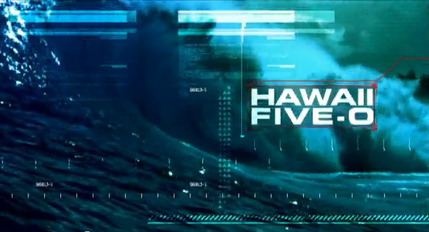
Jack Lord portrayed Detective Captain Steve McGarrett, the head of a special state police task force which was based on an actual unit that existed under martial law in the 1940s. The theme music composed by Morton Stevens became especially popular. Many episodes would end with McGarrett instructing his subordinate to "Book 'em, Danno!", sometimes specifying a charge such as "murder one".
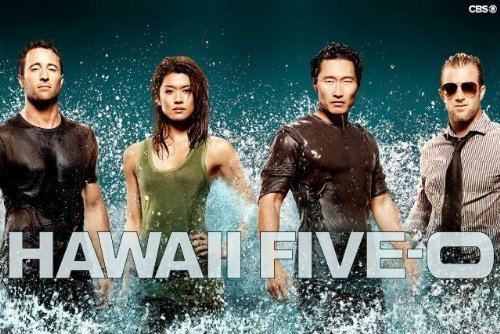
The ventures hawaii five o theme tv show bass cover
Overview
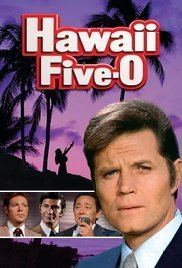
The CBS television network produced Hawaii Five-O, which aired from September 20, 1968, to April 5, 1980. The program continues to be broadcast in syndication worldwide. Created by Leonard Freeman, Hawaii Five-O was shot on location in Honolulu, Hawaii, and throughout the island of Oahu and other Hawaiian islands with occasional filming in locales such as Los Angeles, Singapore, and Hong Kong.
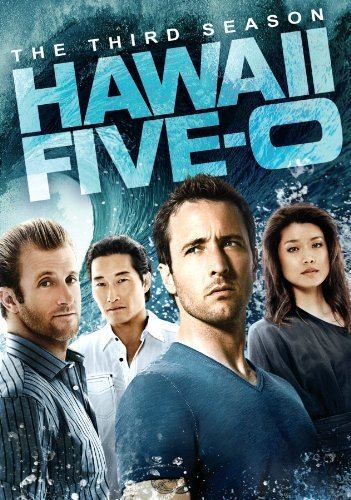
Hawaii Five-O was named in honor of Hawaii's being the 50th state. Although the show's name has always ended with the numeral "0", the soundtrack album, released in the late 1960s, used the letter "O" instead of the numeral zero. The letter "O" is sometimes used to differentiate the original series and the remake which premiered in 2010, and always uses the numeral zero. The show centers on a fictional state police force led by former US naval officer Steve McGarrett (played by Jack Lord), a detective captain, who is appointed by the Governor, Paul Jameson. In the show, McGarrett oversees state police officers – the young Danny Williams, veteran Chin Ho Kelly, and streetwise Kono Kalakaua for seasons one through four. Honolulu Police Department Officer Duke Lukela joined the team as a regular, as did Ben Kokua, who replaced Kono beginning with season five. Occasionally, McGarrett's Five-O team is assisted by other officers as needed: medical examiner Doc Bergman, forensic specialist Che Fong, and a secretary. The first secretary was May, then Jenny, and later Malia, Lani and Luana.
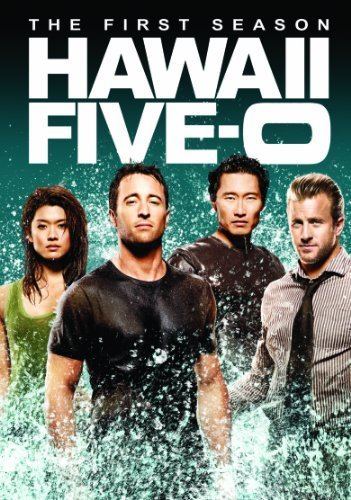
For 12 seasons, McGarrett and his team hounded international secret agents, criminals, and organized crime syndicates plaguing the Hawaiian Islands. With the aid of District Attorney and later Hawaii's Attorney General John Manicote, McGarrett is successful in sending most of his enemies to prison. One such crime syndicate was led by crime family patriarch Honore Vashon, a character introduced in the fifth season. Most episodes of Hawaii Five-O ended with the arrest of criminals and McGarrett snapping, "Book 'em." The offense occasionally was added after this phrase, for example, "Book 'em, murder one." In many episodes, this was directed to Danny Williams and became McGarrett's catchphrase: "Book 'em, Danno."

Other criminals and organized crime bosses on the islands were played by actors such as Ricardo Montalbán, Gavin MacLeod, and Ross Martin as Tony Alika. By the 12th and final season, series regular James MacArthur had left the show (in 1996, he admitted that he had become tired of the role and wanted to do other things), as had Kam Fong. Unlike other characters before him, Fong's character, Chin Ho, at Fong's request, did not just vanish from the show, but instead was murdered while working undercover to expose a protection ring in Chinatown in the last episode of season 10. New characters Jim 'Kimo' Carew (William Smith), Lori Wilson (Sharon Farrell), and Truck (Moe Keale) were introduced in season 12 alongside returning regular character Duke Lukela.
The Five-O team consists of three to five members (small for a real state police unit), and is portrayed as occupying a suite of offices in the Iolani Palace. Five-O lacks its own radio network, necessitating frequent requests by McGarrett to the Honolulu Police Department dispatchers. McGarrett's tousled yet immaculate hairstyle, as well as his proclivity for wearing a dark suit and tie on all possible occasions (uncommon in the islands), rapidly entered popular culture. While the other members of Five-O "dressed mainland" much of the time, they also often wore local styles, such as the ubiquitous "Aloha shirt".
In many episodes (including the pilot), McGarrett is drawn into the world of international espionage and national intelligence. McGarrett's nemesis is a rogue intelligence officer of the People's Republic of China named Wo Fat. The communist rogue agent was played by veteran actor Khigh Dheigh. In the show's final episode in 1980, titled "Woe to Wo Fat", McGarrett finally sees his foe go to jail.
Unlike the reboot the show's action and straightforward storytelling left little time for personal stories involving wives or girlfriends, though a two-part story in the first season dealt with the loss of McGarrett's sister's baby. Occasionally, a show would flash back to McGarrett's younger years or to a romantic figure.
In the episode "Number One with a Bullet, Part 2", McGarrett tells a criminal, "It was a bastard like you who killed my father." His 42-year-old father had been run down and killed by someone who had just held up a supermarket. Because Steve McGarrett is also a commander in the Naval Reserve, he sometimes uses their resources to help investigate and solve crimes. Hence the closing credits of some episodes mentioned the Naval Reserve. A 1975 episode involving Danno's aunt, played by MacArthur's adoptive mother Helen Hayes, provided a bit of Williams' back story.
Creation of the show
Sources differ on how the show came to be. Producer Leonard Freeman moved to Hawaii to recuperate after suffering a heart attack. One source states the idea for the show may have come from a conversation Freeman had with Hawaii's then-Governor John A. Burns. Another source instead claims that Freeman wanted to set a show in San Pedro, California until his friend Richard Boone convinced him to shoot it entirely in Hawaii. A third source claims Freeman discussed the show with Governor Burns only after pitching the idea to CBS. Before settling on the name "Hawaii Five-O", Freeman considered titling the show "The Man".
Casting
Freeman offered Richard Boone the part of McGarrett, but Boone turned it down; Gregory Peck and Robert Brown were also considered. Ultimately, Jack Lord – then living in Beverly Hills – was asked at the last moment. Lord read for the part on a Wednesday, was cast, and flew to Hawaii two days later. On the following Monday, Lord was in front of the cameras. Freeman and Lord had worked together previously on an unsold TV pilot called Grand Hotel.
Tim O'Kelly originated the role of Danny Williams in the pilot episode, "Cocoon." Test audiences apparently weren't positive on O'Kelly, however, and the producers replaced him with James MacArthur.
Kam Fong Chun, an 18-year veteran of the Honolulu Police Department, auditioned for the part of the lead villain Wo Fat, but Freeman cast him in the part of Chin Ho Kelly instead. Freeman took the name Wo Fat from a restaurant in downtown Honolulu. The name Chin Ho came from Chinn Ho, the owner of the Ilikai Hotel where the penthouse shot of Steve McGarrett in the opening title sequence was taken. Richard Denning, who played the governor, had retired to Hawaii and came out of retirement for the show. Zulu was a Waikiki beach boy and local DJ when he was cast for the part of Kono, which he played for the next four years.
Main
Recurring
Production
The first season was shot in a rusty military Quonset hut in Pearl City, which the various cast members quickly nicknamed "Mongoose Manor". The roof tended to leak, and rats would often gnaw at the cables. The show then moved to a Fort Ruger location for seasons two to eight. A third studio was built at Diamond Head, and was used during the last four seasons.
A problem from the beginning was the lack of a movie industry in Hawaii. Much of the crew and cast, including many locals who ended up participating in the show, had to learn their respective jobs as they went along. Jack Lord was known as a perfectionist who insisted on the best from everyone. His temper flared when he felt that others did not give their best, but in later reunions they admitted that Lord's hard-driving force had made them better actors and made Hawaii Five-O a better show. Lord's high standards helped the show last another six years after Leonard Freeman's death from heart trouble during the sixth season.
To critics and viewers, there was no question that Jack Lord was the center of the show, and that the other actors frequently served as little more than props, standing and watching while McGarrett emoted and paced around his office, analyzing the crime. But occasionally episodes would focus on the other actors, and let them showcase their own talents, such as Danno defusing bombs in "The Clock Struck Twelve". Since Jack Lord had a financial interest in the show, he referred to other regular cast actors in the program as a "with", as in "With James MacArthur"; they were never called "co-stars".
Very few episodes were shot outside of Hawaii. At least two episodes were shot in Los Angeles, one in Hong Kong, and one in Singapore. Episodes shot in these locations were the only ones not to bear the "Filmed entirely on location in Hawaii" legend.
Credits
The opening title sequence was created by television director Reza S. Badiyi. Early shows began with a cold open suggesting the sinister plot for that program, then cut to a shot of a big ocean wave and the start of the theme song. A fast zoom-in to the top balcony of the Ilikai Hotel followed, showing McGarrett turning to face the camera, followed by many quick-cuts and freeze-frames of Hawaiian scenery, and Hawaiian-Chinese-Caucasian model Elizabeth Malamalamaokalani Logue turning to face the camera. A grass-skirted hula dancer from the pilot episode was also included, played by Helen Kuoha-Torco, who later became a professor of business technology at Windward Community College. The opening scene ended with shots of the supporting players, and the flashing blue light of a police motorcycle racing through a Honolulu street.
At the conclusion of each episode, Jack Lord narrated a promo for the next episode, often emphasizing the "guest villain", especially if the villain is a recurring character, such as that played by actor Hume Cronyn. The line he spoke was, "This is Jack Lord inviting you to be with us next week for <name of episode>" and then, "Be here. Aloha." The promos were removed from the syndicated episodes but most have been restored in DVD releases from the second season through the ninth. Most of the promos are slightly edited to remove references to "next week".
This tradition has been continued in the 2010 version of Hawaii Five-0, but is not limited to Alex O'Loughlin. All of the primary cast members take turns with the iconic "Be here. Aloha" line at the end of the preview segment.
There were two versions of the closing credits portion of the show. During the first season, the theme music was played over a short film of a flashing blue light attached to the rear of a police motorcycle in Waikiki heading west (the film is shown at twice the normal speed, as can be seen from people crossing a street behind the police motorcycle). In later seasons, the same music was played over film of outrigger canoeists battling the surf.
In a 2010 issue of TV Guide, the show's opening title sequence ranked No. 4 on a list of TV's top 10 credits sequences, as selected by readers.
Legacy
The show was the longest running crime show on American television until Law & Order surpassed it in 2003 and was the first to enjoy an uninterrupted run that exceeded a decade (it has since been joined in that distinction by several other series including Law & Order: Special Victims Unit, CSI: Crime Scene Investigation and NCIS).
When the show premièred in 1968, Hawaii had been a state for only 9 years and was relatively obscure to Americans who had never served in the Pacific Theater; but as a geographic part of Polynesia, it had an exotic image.
Known for the location, theme song, and ensemble cast, Hawaii Five-O contains a heavy use of exterior location shooting throughout the entire 12 seasons. A typical episode, on average, would have at least two-thirds of all footage shot on location, as opposed to a "typical" show of the time which would be shot largely on sound stages and backlots. It is also remembered for its unusual setting during an era when most crime dramas of the era were set in or around the Los Angeles or New York City areas.
The Hawaii-based television show Magnum, P.I. was created after Hawaii Five-O ended its run, in order to make further use of the expensive production facilities created there for Five-O. The first few Magnum P.I. episodes made direct references to Five-O, suggesting that it takes place in the same fictional setting. Magnum's producers made a few attempts to coax Jack Lord out of retirement for a cameo appearance, but he refused.
The vast majority of characters in the show were White Americans, whereas only 40% of the population of the state identified themselves as such. Many local people were cast in the show, which was ethnically diverse by the standards of the late 1960s. The first run and syndication were seen by an estimated 400 million people around the world.
Remake projects
A one-hour pilot for a new series was made in 1996 but never aired. Produced and written by Stephen J. Cannell, it starred Gary Busey and Russell Wong as the new Five-O team. James MacArthur returned as Dan Williams, having become governor of Hawaii. Several cameos were made by other Five-O regulars, including Kam Fong as Chin Ho Kelly (even though the character had been killed off at the end of Season 10).
The one-hour pilot for a revived show, called Hawaii Five-0 (the last character is a zero instead of the letter "O", which is the true title of the original series as well), aired September 20, 2010, on CBS, and as of October 2013, the series now airs Friday nights at 9 PM Eastern, 8 PM Central time. The remake version Hawaii Five-0 uses the same principal character names as the original, and the new Steve McGarrett's late father's vintage 1974 Mercury Marquis is the actual specimen driven by Lord in the original series's final seasons. The new series opening credit sequence is an homage to the original; the theme song is cut in half, from 60 to 30 seconds, but is an otherwise identical instrumentation. Most of the iconic shots are replicated, beginning with the helicopter approach and close-up turn of McGarrett at the Ilikai Hotel penthouse, the jet engine intake, a hula dancer's hips, the quickly stepped zoom-in to the face of the Lady Columbia statue at Punchbowl, the close-up of the Kamehameha Statue's face, and the ending with a police motorcycle's flashing blue light. Starting with the Season 7 many of the clips that were part of the original opening were removed and more action shots of the cast were included. On the March 19, 2012 episode, Ed Asner reprised his role as "August March", a character he first played in a 1975 episode. Clips from the 1975 episode were included in the new one, even though the 2010 series is intended to be in a different narrative universe than the Jack Lord series.
Theme music
Another legacy of the show is the popularity of the Hawaii Five-O theme music. The tune was composed by Morton Stevens, who also composed numerous episode scores. The theme was recorded by the Ventures, whose version reached No. 4 on the Billboard Hot 100 pop chart, and is particularly popular with college and high school marching bands, especially at the University of Hawaii where it has become the unofficial fight song. The tune has also been heard at Robertson Stadium after Houston Dynamo goals scored by Brian Ching, a native of Hawaii. Because of the tempo of the music, the theme gained popularity in the UK with followers of Northern soul and was popular on dance floors in the 1970s.
Although the theme is most widely known as an instrumental, it has been released with at least two similar but different sets of lyrics. The first, "You Can Come With Me" by Don Ho, opens with an instrumental in the familiar tempo, then settles into a ballad style for the sung portion. The second, by Sammy Davis, Jr., titled "You Can Count on Me (Theme from Hawaii Five-O)", maintains the driving style of the original instrumental throughout.
Australian proto-punk band Radio Birdman borrowed heavily from the program and its theme for their 1977 single "Aloha, Steve & Danno", later included on selected versions of the album Radios Appear. Band leader Deniz Tek, who grew up in Ann Arbor, Michigan during the heyday of MC5 and The Stooges, commented that he found Sydney of the early 1970s to be a rather quiet and staid place in comparison, and that airings of the program were a weekly highlight. The song was written after the band members realized they were spending a lot of evenings watching the program. The lyrics of the song's verses consist entirely of references to story lines of the early episodes. The chorus alludes to the boredom which band members experienced when the program wasn't on. The song's guitar solos and other elements of the music were directly derivative of the program's theme; Stevens received a writing credit on the song as a result.
In the Australian movie The Dish, the theme was mistaken for the national anthem of the US by a local band upon the visit of the US Ambassador to Parkes, NSW, to commemorate the 1969 Moon landing.
Bill Murray sang his own made-up lyrics to the song on one of his "Nick the Lounge Singer" skits on Saturday Night Live.
On the 1997 Bill Nye the Science Guy episode "Volcanoes", the MIDI version of "Hawaii Five-O" was used during the "Pahoehoe Five-O" segments.
Darts player Wayne Mardle used the song as his walk-on song.
The Sammy Davis Jr. version of the theme song was recorded by Los Straitjackets with Deke Dickerson and released in 2014.
Slang term for police
The phrase "Five-O" (or any variation, such as "5–0", "5-o", and "five O", all usually pronounced "five oh") has come to refer to the police in the United States.
Withheld episode
"Bored, She Hung Herself", the 16th episode of the second season, depicted a Five-O investigation into the apparent suicide of a woman by hanging, which she was supposedly practicing as part of a health regimen. A viewer reportedly died trying the same technique, and as a result, the episode was not rebroadcast, was never included in any syndication packages, and has not been included on any DVD release of the show to date.
Broadcast history
Syndication
Hawaii Five-O survived long enough to overlap with reruns of early episodes, which were broadcast by CBS in their late night schedule while new episodes were still being produced. Once the program entered syndication after the original run of the series, CBS broadcast reruns of season 12 in late night under the title McGarrett to avoid confusion with the episodes in syndication broadcast under the title Hawaii Five-O.
The series was first shown in the United Kingdom on 19 July 1970 on the ITV network in a Saturday evening timeslot.
Emmys
Streaming media
CBS Interactive had presented the entire first season of the show online via Adobe Flash streaming media. As of September 2009, selected episodes are available at CBS.com. These are full-length episodes available free of charge, but with ads embedded into the stream of each episode.
DVD releases
CBS DVD (distributed by Paramount) has released all twelve seasons on DVD in Region 1. The first eight seasons have been released in region 2 and region 4.
Note: The episode "Bored, She Hung Herself" is not included in The Second Season set. The omission is mentioned on the back of the box. Only some Australian bootlegs have had the episode. Seasons 2–8 contain episode promos by Jack Lord.
On December 3, 2013, Paramount released Hawaii Five-O – The Complete Series on DVD in Region 1.
Other media
A soundtrack album featuring Morton Stevens' theme and incidental music from the pilot and the first two seasons was issued by Capitol Records in 1970. Unlike many albums of television music of the time, the music was taken directly from the scoring sessions rather than being specially re-recorded for album release. One of the instrumental pieces on the album, "Call to Danger", was originally recorded for the unsold 1967 pilot of the same name and also excerpted as background music accompanying a "Special Presentation" logo that CBS used to introduce its prime time television specials throughout the 1970s and 1980s. The album was re-issued on compact disc by Film Score Monthly in 2010.
- Hawaii Five-0 (1:32)
- Call to Danger (1:48)
- McGarrett's Theme (2:25)
- Front Street (2:42)
- The Long Wait (2:18)
- Blues Trip (3:14)
- The Floater (2:23)
- Interlude (1:53)
- Operation Smash (2:05)
- Beach Trip (2:30)
- Up Tight (2:05)
- The Chase/Hawaii Five-0 (4:36)
Hawaii Five-O was the subject of six novelizations. Each one had a plot line written for the book and was not based on a television episode. The first two books were published by Signet Paperbacks in 1968 and 1969. After that were two juvenile hard covers published by Whitman publishing in 1969 and 1971 and finally two more books were published in England.
